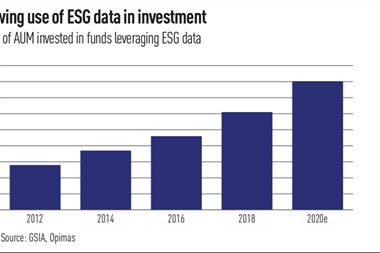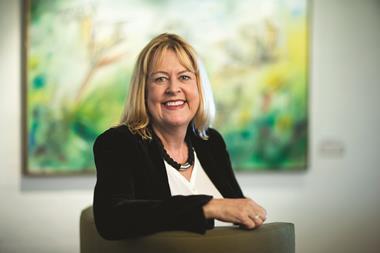Sweden’s AP2 has pulled out of fossil fuel companies in connection with portfolio changes leaning on rules for a recently introduced EU climate benchmark, the fund’s latest step towards the goal of aligning its investments with the Paris Agreement.
The state pensions buffer fund today announced it had adjusted its internal indices and portfolios for foreign equities and corporate bonds to ensure the holdings were consistent with the EU Paris-Aligned Benchmark (PAB).
The changes relate to half of AP2’s portfolio – AP2 has total assets of just over SEK360bn (€34.6bn). The fund said the adjustments had been made in such a way that the return and risk characteristics of its indices were not compromised.
“As far as we know, this portfolio adjustment […] is unique in that it includes our corporate bonds and equities,” said Eva Halvarsson, CEO of AP2, in a blog post.
The fund plans to use the PAB rules to make changes to other parts of its portfolio.
“This is not the end of the road,” said Tomas Morsing, head of research and development at the fund. “The project will continue next year and we’ll do Swedish equities and Chinese equities.”
According to AP2, the move to manage its holdings in keeping with the PAB means that it does not invest in companies that generate more than 1% of their turnover from coal, more than 10% of their turnover from oil, and more than 50% of their turnover from gas.
”In principle, this excludes the entire energy sector,” it said.
The fund has also divested from utility companies that receive more than 50% of their revenues from fossil fuels. In total, around 250 companies will no longer be included in the fund’s portfolio.
In March, AP1 said it was the first Swedish pension fund to announce an end to investment in fossil fuels.
‘Net-zero by 2045’
The PAB is one of two categories of EU climate benchmarks that have been introduced under new regulation stemming from the European Commission’s sustainable finance action plan.
It is the more ambitious of the two, requiring carbon dioxide intensity to be reduced by 50% during the first year, plus a 7% annual decrease that is also a requirement for the other climate benchmark category.
AP2 has gone beyond the PAB requirement of halving the carbon footprint in the first year.
“Given the seriousness of the climate issue, we wish to set ourselves an even more ambitious target,” said Halvarsson. “This year already, the carbon footprint of global corporate bonds will be reduced by about 75%, and that of our global equities by about 70%, as measured against market-weighted indices.”
She said the annual emission reduction would therefore be less than 7%, “but we will reach net zero emissions by 2045”.
Not being a public index provider, AP2 is not covered by the PAB rules or any of the EU climate benchmark regulation, as it is intended for public index providers wishing to market offerings as EU climate indices.
However, it saw benefits in adapting and implementing the PAB framework as an asset owner.
“We believe it has clear advantages to use an external regulatory framework, which is based on the science [the Intergovernmental Panel on Climate Change] has compiled and developed by a credible institution as the EU,” wrote Halvarsson.

Morsing said AP2’s board had been keen for the fund to divest from fossil fuel companies, and that the EU climate benchmark regulation was attractive in that it offered clear and transparent definitions about such divestment.
“It also means more than divesting, it’s promoting companies that are important for a green transition,” he added.
Although commercial index providers and asset managers have been announcing EU climate benchmark products, AP2 is thought to be the first asset owner to have carried out in-house implementation of the PAB indices.
This was noted by Andreas Hoepner, professor at University College Dublin and a member of the group that advised the European Commission on the EU climate benchmarks, who also said he thought that with this move, AP2 had “taken a huge step towards a net-zero world”.
“The indices follow an aggressive path with the exclusion of fossil fuels, while at the same time being responsible in other social and sustainable aspects,” he added. “Hopefully this can also inspire other asset owners around the world.”
Asked about criticisms by Scientific Beta and some others of the carbon intensity metric used for the EU climate benchmarks, Morsing said AP2 was satisfied with enterprise value as the denominator.
He said that in a single year there could be some “injustices” between companies as the carbon intensity of some could improve merely because of it being a good year in the market, but that in the long run he did not think this would be a big issue.
“You have to remember that the overall mission here is to send a clear message that the world needs to get to zero by 2050,” he said.













No comments yet